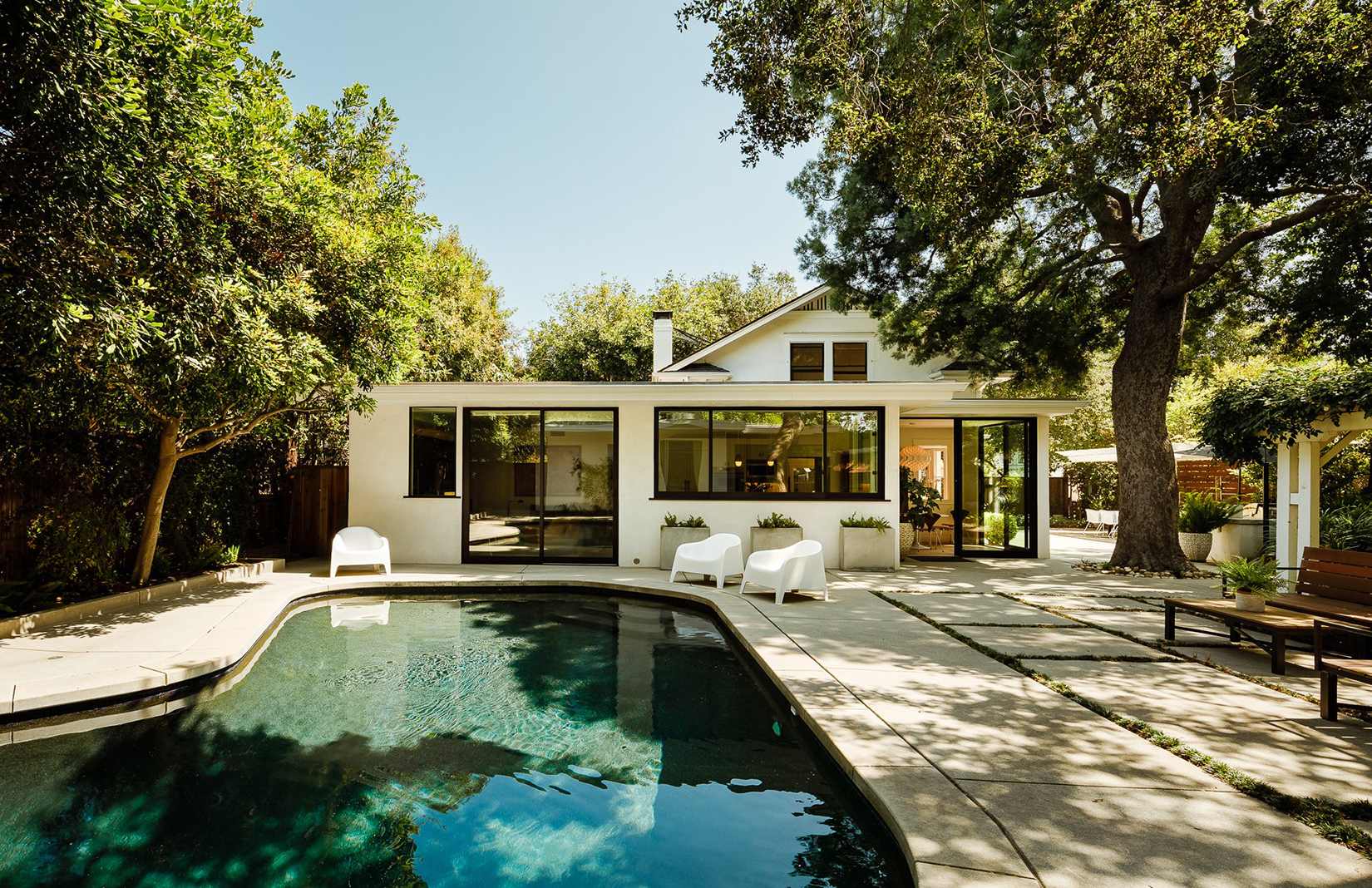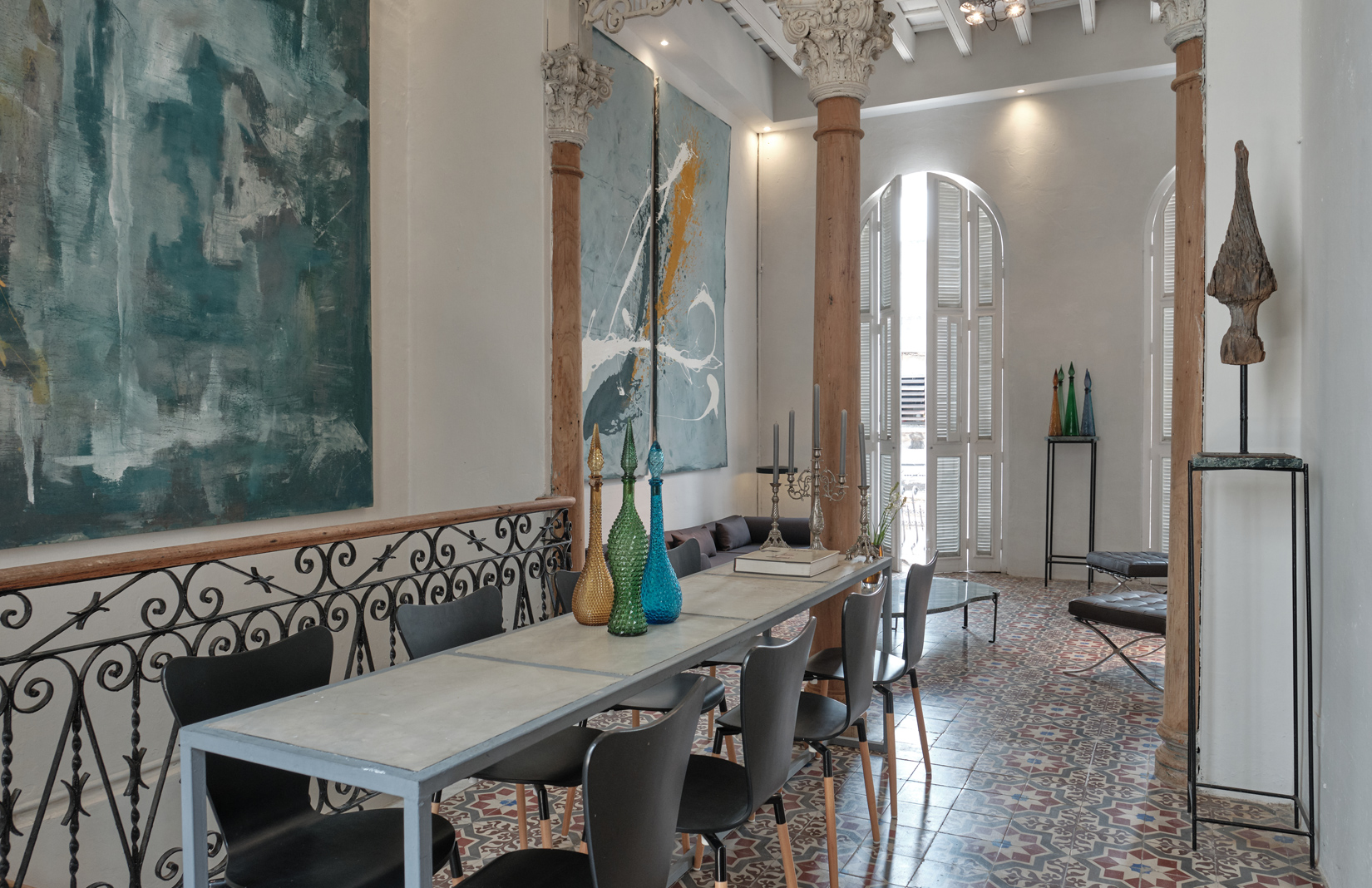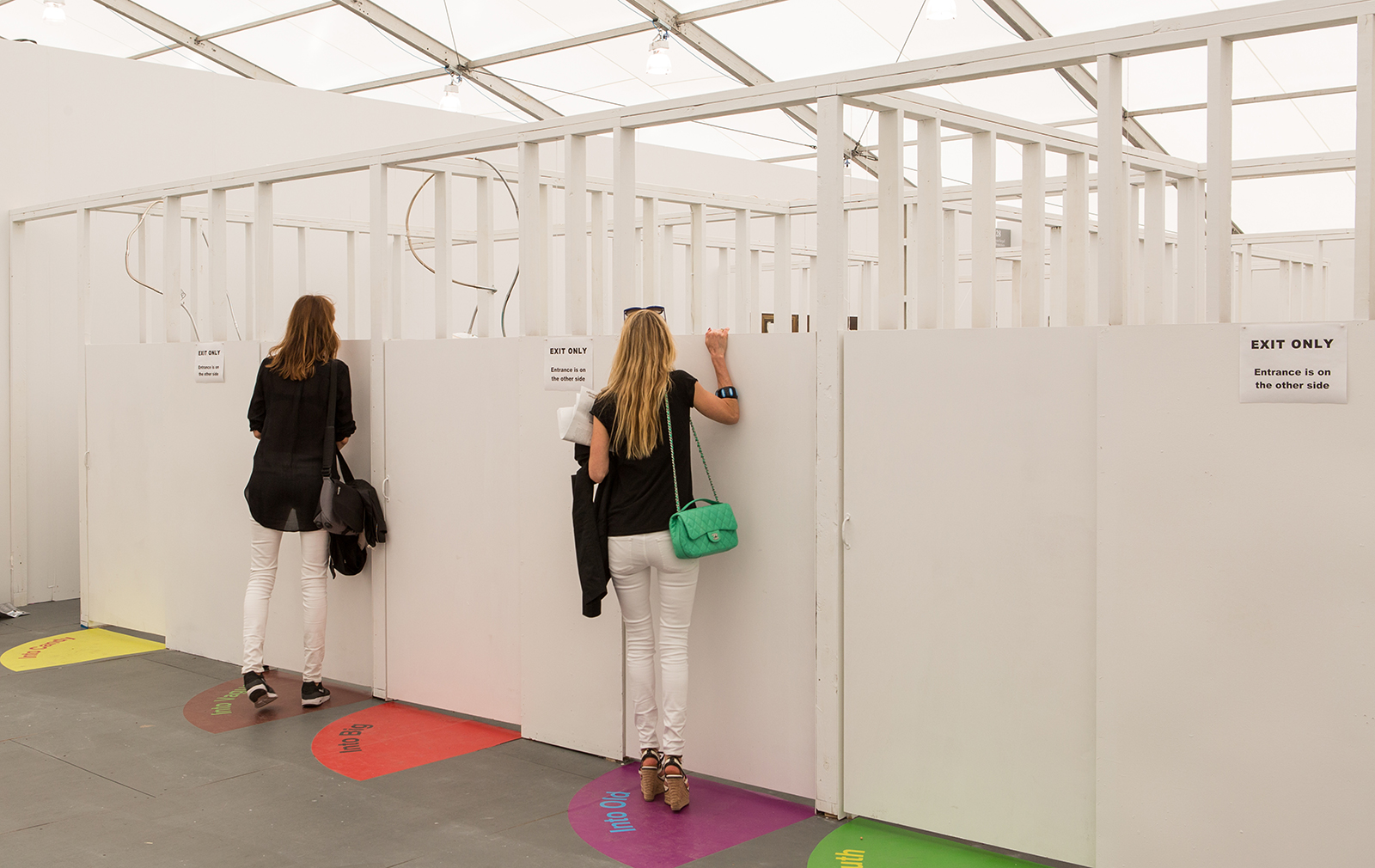
Nearly 200 exhibitors filled booths inside Frieze Art Fair’s vast white bivouac last weekend but some of most intriguing works interacted with the tent itself.
Designed by Brooklyn-based firm SO-IL, this juggernaut of a canvas on Randall’s Island is an engineering feat. Almost every element of the temporary structure – built with the same principals of structural design used by tent-city genius Cedric Price – is variable, making its adaptive possibilities endless.
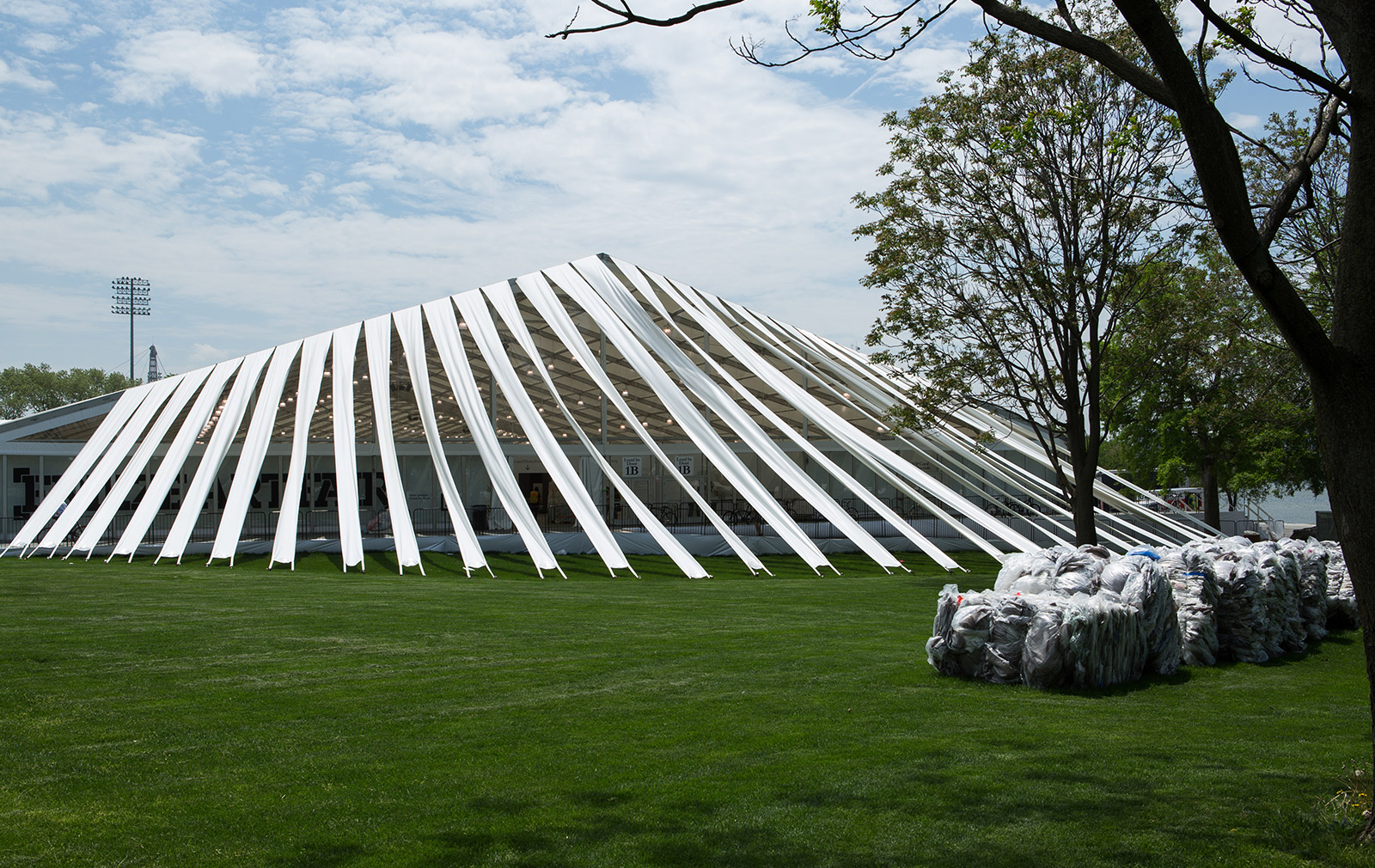
Spotting its potential, Frieze Projects invited artists to create works using SO-IL’s tent structure and space as a starting point, inserting their own worlds into the tented volume. These artists were asked to create a dialogue with and within the architecture of the canopy; distorting elements of the structure and expanding the way guests interact with the space.
‘I wanted to explore the atmosphere and the invisible elements of the tent,’ explained performance artist Aki Sasamoto, one of five artists commissioned to occupy the Project spaces. ‘Performance art helps me think about that because you are reacting to air, temperature and volume,’ Sasamoto continued. ‘Assessing the air quality was important.’

A visitor takes Aki Sasamoto’s personality test in one of her chambers within SO-IL’s tent. Photography: Tim Schenk, courtesy of Tim Schenk/Frieze
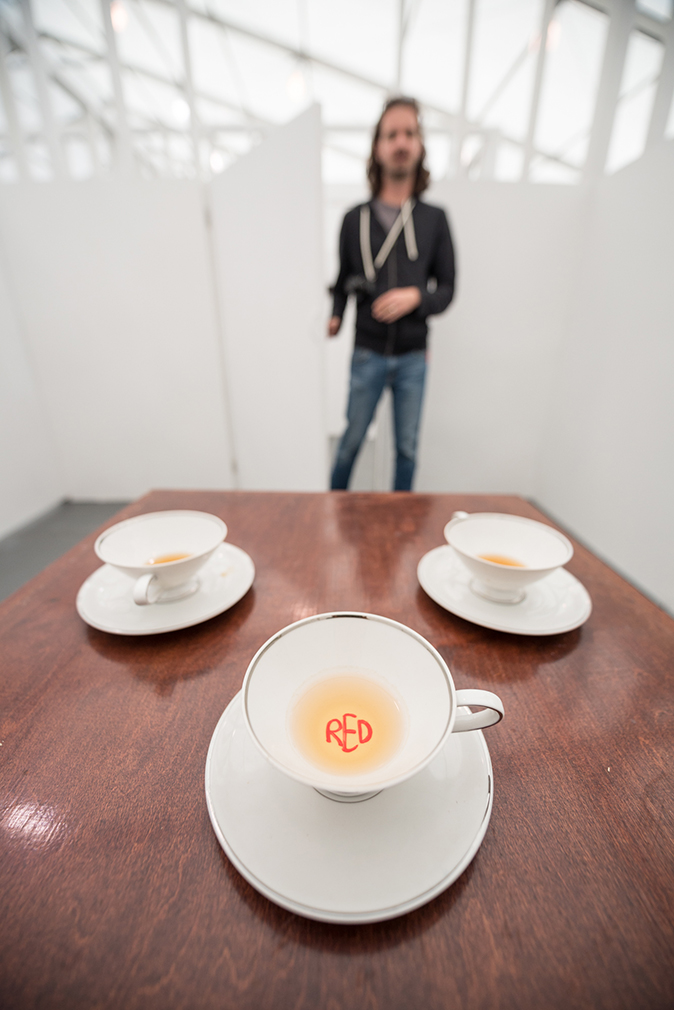
Which cup will he pick? The visitor’s choice will lead him through different doors of Sasamoto’s maze. Photography: Tim Schenk, courtesy of Tim Schenk/Frieze
Sasamoto’s work didn’t only question the physical space: she also probed our emotional capacity by constructing a personality test that involved the user walking through various rooms. The maze-like structure was built within the grid of the galleries’ booths and viewers faced a choice between two objects or situations; those choices lead them through doors where they discover which personality suits them best.
‘I built the rooms at this height so that you can see people making their way through the installation; you’re aware of the space but you’re still restricted,’ the artist explained. The idea of privacy was pushed, mainly because Frieze is a very public fair in a very open volume. Sasamoto’s rooms gave fair-goers an intimate moment where they had to make very personal decisions alone.
Los Angeles-based artist Samara Golden instead took the unseen spaces of the tent as a starting point. The tent is the largest of its type on the planet; underneath its footprint there is a network of cables, pipes and axillary arteries that keep things ticking over above. Those walking around the fair in skirts or shorts can feel the updraft of cold air below. It’s in this space that Golden created an imaginary depth and a sixth dimension of sorts.

The artist suggested lateral spaces that only appear in mirrors; the space expanded in multiple directions, and even directions that didn’t exist. It was a portal to a new world where the tent didn’t simply act alone, but instead became a medium for discovering new worlds and time. As in an archeological site, Golden’s installation revealed the underbelly of the fair, which is usually invisible to fairgoers.
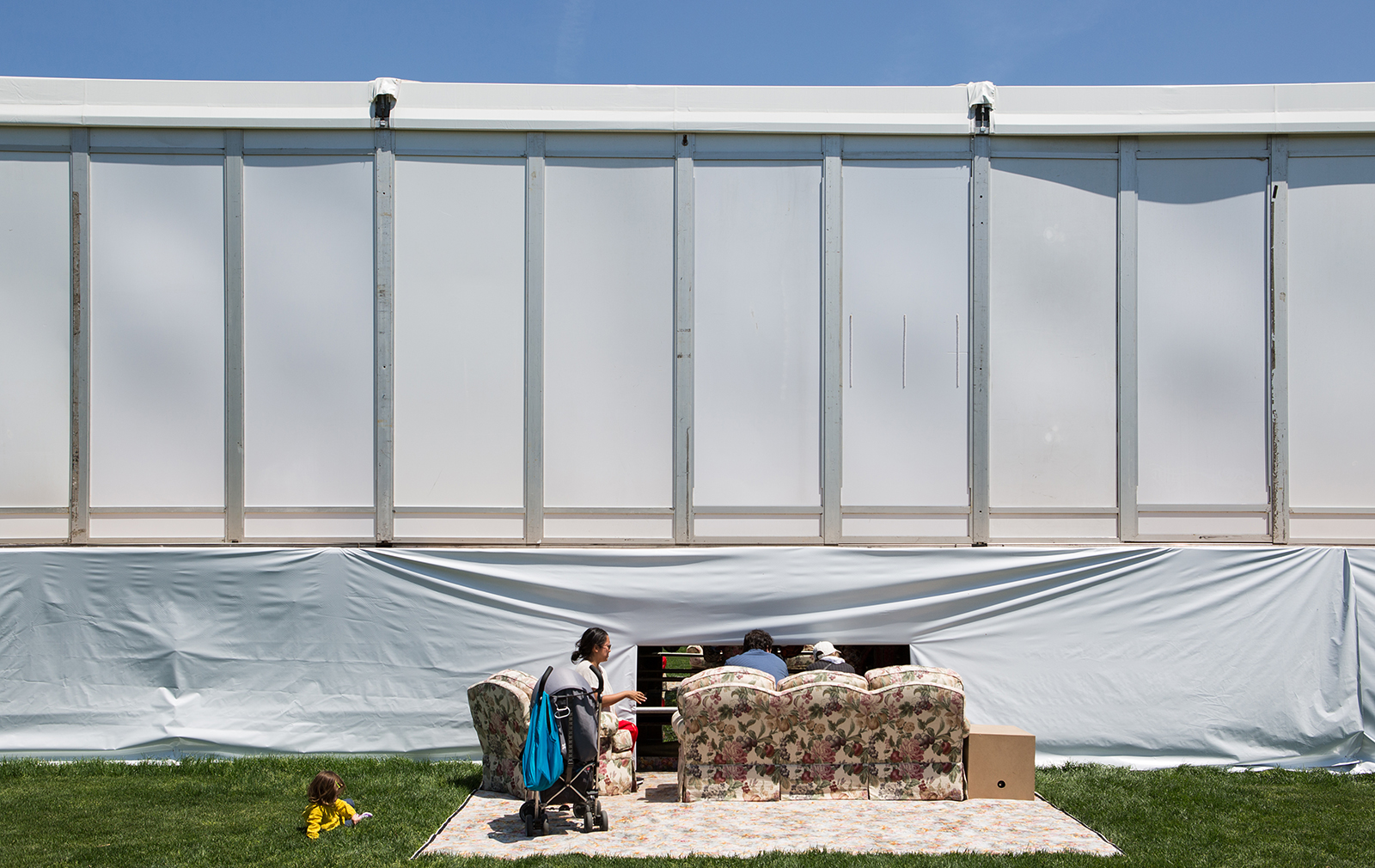
For SO-IL, creating a space that could be expanded — or contracted — in new ways was always part of their brief. The Buckminster Fuller school of thinking that inflatable buildings are the future is prevalent here. That SO-IL’s client Frieze invited commissions to actively push the same exploratory principals has created a richer art experience.








